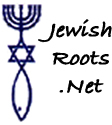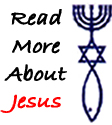







The Sanhedrin was a religious-legal assembly of 71 sages (odd number so there could never be a tie vote) including the high priest that convened during the Holy Temple period and for several centuries afterwards. It was the highest Jewish judicial tribunal in the Land of Israel. The great court used to convene in one of the Temple's chambers in Jerusalem, possible the Hall of Hewn Stone.
Jewish tradition traced the origin of the Sanhedrin to the seventy elders who assisted Moses (Num. 11:16-17). Ezra, according to tradition, reorganized that body after the exile (cf. Ezra 5:5, 9; 6:7-8, 14; 10:8). However, the Sanhedrin of New Testament times probably originated during the period of Persians or Greek rule. It consisted of seventy-one members, presided over by the reigning high priest. It included men from the influential priestly families, elders (family and tribal heads), scribes (experts in the law), and any former high priest who were still alive. Under the Romans, the Sanhedrin exercised wide-ranging powers in civil, criminal, and religious matters (though the Romans withheld the power of capital punishment [18:31]).(1)
It had the authority both to make arrests (Matt. 26:47; Acts 4:1-3; 5:17-18) and to conduct trials (Matt. 26:57ff.; Acts 5:27ff.). Although its influence extended even to Jews of the Diaspora (cf. Acts 9:1-2; 22:5; 26:12), the Sanhedrin's direct authority seems to have been limited to Judea (it apparently wielded no power over Jesus while He was in Galilee; cf. John 7:1). After the failure of the Jewish revolt (A.D. 66-70), the Sanhedrin was abolished and replaced by Beth Din (Court of Judgment). Unlike the Sanhedrin, however, the Beth Din was composed solely of scribes (lawyers), and its decisions were exclusively limited to religious matters.(1)
The Sanhedrin was re-established (October 13th 2004) through the ordination of one rabbi agreed upon by many prominent rabbis in Israel and approved as “fitting to serve” by former Chief Sefardi Rabbi Ovadiah Yosef and leading Ashkenazi Rabbi Yosef Shalom Elyashiv. That rabbi, who is then considered to have received authentic ordination as handed down from Moses, was then able to give ordination to 70 others, making up the quorum of 71 necessary for the Sanhedrin.
The Talmud teaches that the Sanhedrin was convened in ten separate cities after the destruction of the Second Temple, last meeting around 425 A.D. in Tiberias. It has been almost 1600 years since this court could convene. It therefore seemed fitting to reconvene back in Tiberias, with an understanding to relocate back to Jerusalem.
Those behind the revival of the Sanhedrin stress that the revival of the legal body is not optional, but mandated by the Torah.
The Sanhedrin includes members of Ashkenazi, Sefardi, Hasidic, National-Religious and Hareidi communities.
A tradition is recorded in the Talmud (Tractate Megillah 17b, Rashi) that the Sanhedrin will be restored after a partial ingathering of the Jewish exiles, but before Jerusalem is completely rebuilt and restored. Another Talmudic tradition (Eruvin 43b; Maharatz Chajas ad loc; Rashash to Sanhedrin 13b) states that Elijah the Prophet will present himself before a duly-ordained Sanhedrin when he announces the coming of the Messiah. This indicates that despite common misconceptions, a Sanhedrin is a pre-, not post-messianic institution. This may draw upon Malachi 4:5-6 for support.
"The Messiah will be a king of Israel, and as such, he can only be recognized by a duly ordained Sanhedrin" (Tosefta, Sanhedrin 3:2; Yad, Sanhedrin 5:1).
In other words, when the Messiah arrives in Israel-an event viewed by traditional Judaism as the Messiah's first coming, and by messianic believers (or Christians) as His second coming-an official, legal body must be empowered to grant Him formal recognition on behalf of the entire nation of Israel.(2)
In the biblical accounts of the betrayal, arrest, trial, condemnation, and crucifixion of Jesus (Yeshua) of Nazareth the Sanhedrin was active (Matthew 26:-57-66). Why couldn't the same body that rejected him 2000 years ago also be the one to receive Him when He returns at the end of the age?(1)
This does not mean however that the Sanhedrin group currently in the news is the same Sanhedrin that will recognize Him.(2)
When the armies of the world surround Jerusalem (Zech 14:1-3), the High Priest and members of the Sanhedrin will realize, somehow, that Yeshua (Jesus) is their only hope. In desperation, they will fall on their faces and cry out, "Baruch Haba Bashem Adonai" ("Blessed is He who comes in the Name of the Lord" Psalm 118:26). After the Sanhedrin is able to "see" Him with their spiritual eyes and make their messianic declaration (Psalm 118:26); then they will see Him with their physical eyes when He descends from the heavens to intervene in the Armageddon campaign (Rev. 16:16, 19:11-16).(2)
The term "Rabban" is a form reserved for the president of the Sanhedrin, and is said to have been applied first to Gamaliel the Elder, who died around AD 50. Gamaliel is mentioned in the New Testament (Acts 5:34), and had been a teacher of the Saul of Tarsus, who became the apostle Paul.
After the destruction of the temple in 70 A.D. the rabbis established a temporary headquarters in Yavneh which today is located a little bit south of Tel Aviv. Under the leadership of Rabbi Yohanan ben Zakkai, who was succeeded by Rabban Gamaliel 2nd, the city was considered a substitute to Jerusalem and some made the tradition holiday visits there three times a year.
A small Sanhedrin was a judicial court of 23 members.
1). The MacArthur New Testament Commentary John 1-11 p.141
2). Christian Jew Foundation, Messianic Perspectives, May/June 2007.
Jewish World
Arutz-7 News
Fall Feast of Israel (Encyclopedia Judaica Vol. 9 P.1176-1177)